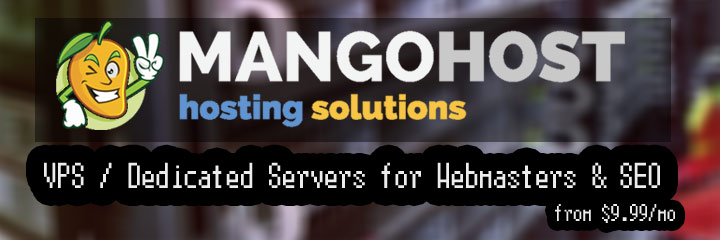
 Get the solution ↓↓↓
Get the solution ↓↓↓
You are right and the other developer doesn't need to have php nor composer installed. All he/she needs is Docker installed on the local machine.
If you scaffolded the project with what is mentioned in the official Laravel docs under the Getting started section, then you will have a docker-compose.yml file in your project root directory.
All the developer has to do after git cloning the repository is to run
docker-compose up --build -d
That's it.
For those struggling with this issue... I've found a command that work perfectly fine.
First of all, you don't need to locally have any PHP or Composer installed, maybe there is a misunderstanding about it, all you need is Docker.
Docker will install everything you need in something I understand is like a sandbox, not locally, for each project.
And for those downloaded projects, from GIT as example, that does not havevendor folder, and obviously cannot executesail up you can simple execute:
docker run --rm --interactive --tty -v $(pwd):/app composer install
That command will download a composer image for docker, if you do not have one yet. Then, will run acomposer install and you are free to execute a./vendor/bin/sail up if you hadn't configured an alias or justsail up if you already configure an alias.
That's all.
The official documentation lists the following command.
docker run --rm \
-u "$(id -u):$(id -g)" \
-v $(pwd):/var/www/html \
-w /var/www/html \
laravelsail/php81-composer:latest \
composer install --ignore-platform-reqs
If you were to clone a Laravel project and run this command in the project root, it would create a very small container with php and composer installed and run composer in the project root to install all php dependencies. In effect, this installs the Laravel core code into the cloned project. Once the project in set up this way, the user should create a local.env file to match their development evironment.
cp .env.example .env # creates a .env file to be populated for the local environment
With the envronment set up, they can now create the application containers in docker and run the application. Laravel provides the Sail helper for this.
./vendor/bin/sail up -d # runs the docker containers in detached mode
Now it's a matter of setting up the laravel app and running the Laravel app. (I'm assuming the app uses one of the Laravel start kits that rely on Node.js. If you are using a Blade only application, you can skip the "npm" commands.)
sail artisan key:generate # (Best Practice) Generate a new application key on each machine
sail artisan migrate # Scaffold the database structure
sail artisan db:seed # (Optional) Seed the database with data
sail npm install # (Optional) Install front-end dependencies (Inertia, Vue, React, others...)
sail npm run dev # (Optional) Run the front-end framework in development mode
With this, the new developer should be running an exact copy of both the project and the development environment as the original developer.
Your project README may include additional steps to set up some other dependencies, but this is the basic workflow for contributing to a Laravel project.
The only prerequisites for this workflow is to have Docker installed with an Internet connection. This is most easily accomplished on Windows, Mac, and Linux by installing Docker Desktop.
If you are working on an older project that doesn't use Laravel Sail, but does have adocker-compose.yml file, you should be able to build and run the necessary containers with the following command.
docker-compose up --build -d
Once you have the containers running, you would need to install the project dependencies directly into the container.
docker ps # find the container ID of your project's container
docker exec -it CONTAINER_ID php artisan key:generate
docker exec -it CONTAINER_ID php artisan migrate
docker exec -it CONTAINER_ID php artisan db:seed
docker exec -it CONTAINER_ID npm install
docker exec -it CONTAINER_ID npm run dev
Of course, Docker Desktop simplifies this process. With a button click you can have a terminal shell open directly in your container eliminating the need for thedocker exec command.
Our community is visited by hundreds of web development professionals every day. Ask your question and get a quick answer for free.
Find the answer in similar questions on our website.
Do you know the answer to this question? Write a quick response to it. With your help, we will make our community stronger.
PHP (from the English Hypertext Preprocessor - hypertext preprocessor) is a scripting programming language for developing web applications. Supported by most hosting providers, it is one of the most popular tools for creating dynamic websites.
The PHP scripting language has gained wide popularity due to its processing speed, simplicity, cross-platform, functionality and distribution of source codes under its own license.
https://www.php.net/
Laravel is a free open source PHP framework that came out in 2011. Since then, it has been able to become the framework of choice for web developers. One of the main reasons for this is that Laravel makes it easier, faster, and safer to develop complex web applications than any other framework.
https://laravel.com/
React is currently the leader in JavaScript UI frameworks. First, the Facebook developers started working on this to make their job easier. An app called Facebook Ads grew very quickly, which meant complex management and support. As a result, the team began to create a structure that would help them with efficiency. They had an early prototype before 2011, and two years later, the framework was open source and available to the public. It is currently used by many business giants: AirBNB, PayPal, Netflix, etc.
https://reactjs.org/
Node.js is an open source server-side framework built on top of the Google Chrome JavaScript Engine. The number of sites using NodeJS has increased by 84,000. It is one of the busiest cross-platform JavaScript runtimes. Node.js is an asynchronous, single-threaded, non-blocking I / O model that makes it lightweight and efficient. The Node.js package ecosystem, npm, is also the world's largest open source library ecosystem.
https://nodejs.org/
HTML (English "hyper text markup language" - hypertext markup language) is a special markup language that is used to create sites on the Internet.
Browsers understand html perfectly and can interpret it in an understandable way. In general, any page on the site is html-code, which the browser translates into a user-friendly form. By the way, the code of any page is available to everyone.
https://www.w3.org/html/

Welcome to the Q&A site for web developers. Here you can ask a question about the problem you are facing and get answers from other experts. We have created a user-friendly interface so that you can quickly and free of charge ask a question about a web programming problem. We also invite other experts to join our community and help other members who ask questions. In addition, you can use our search for questions with a solution.
Ask about the real problem you are facing. Describe in detail what you are doing and what you want to achieve.
Our goal is to create a strong community in which everyone will support each other. If you find a question and know the answer to it, help others with your knowledge.